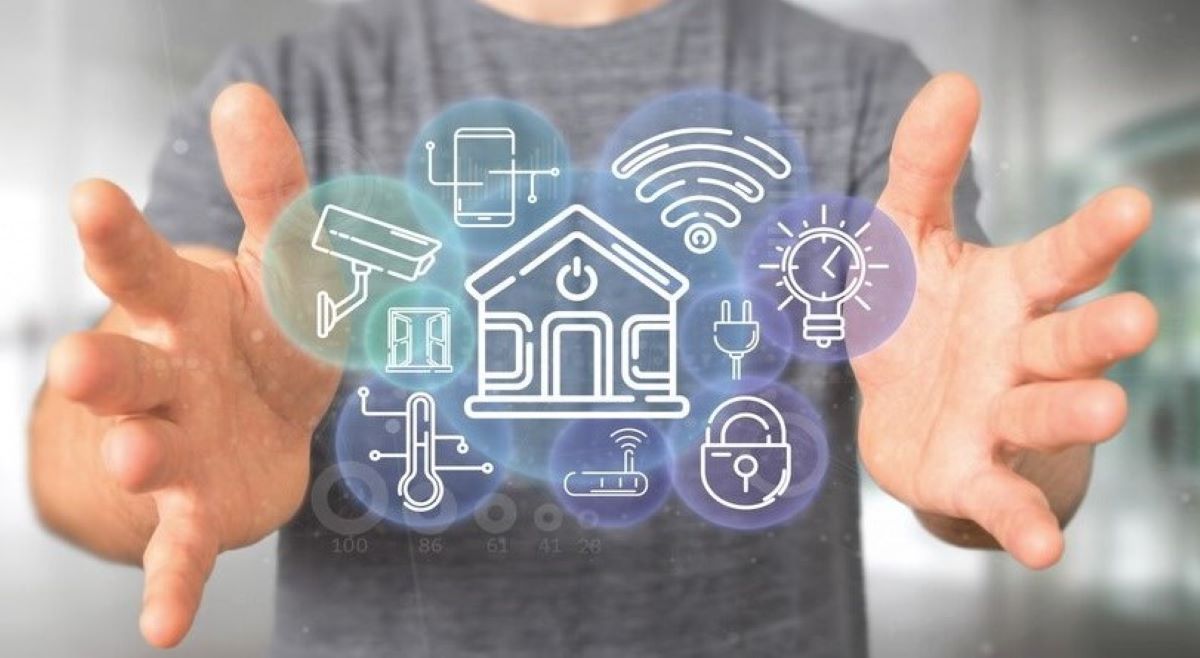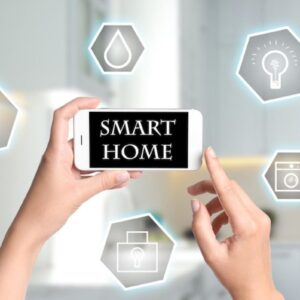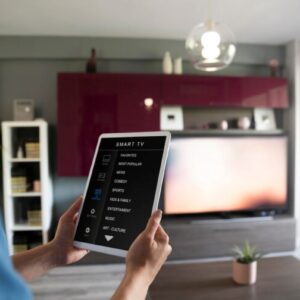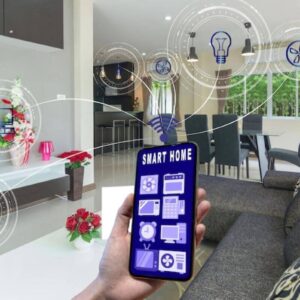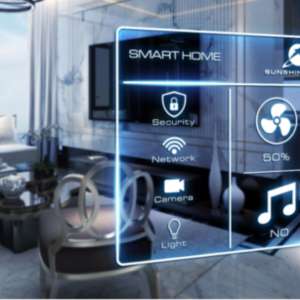Introduction
Technological innovation has propelled the phrase smart home beyond a mere buzzword to become synonymous with a lifestyle revolution. Delving into the realm of smart homes brings forth a myriad of advantages that redefine the way we experience and interact with our living spaces.
The primary focus of this exploration lies in unraveling the countless benefits encapsulated within the smart home advantage. From heightened efficiency to unparalleled convenience, the advantages of smart homes extend far beyond the realm of technology. Embracing this transformative trend means integrating intelligent solutions that enhance security, promote sustainability, and create a seamless, connected lifestyle.
As we navigate the intricacies of smart home living, the spotlight remains on unraveling the multifaceted smart home advantage, a journey that propels us into a future where technology enriches our daily lives in unprecedented ways.
1. Advantages of Smart Home Solutions
A. Efficiency and Convenience
One of the primary advantages of smart home solutions is the unprecedented level of efficiency and convenience they bring to everyday tasks. Imagine controlling your home’s lighting, temperature, and security systems with a single tap on your smartphone. Smart homes streamline routine activities, saving time and effort while offering unparalleled convenience.
B. Enhanced Security Measures
The smart home advantage extends to security enhancements. Advanced surveillance systems, smart locks, and real-time monitoring provide homeowners with a robust security framework. Receive instant alerts and remotely manage your home’s security, contributing to peace of mind and a heightened sense of safety.
C. Energy Efficiency and Sustainability
Smart home solutions contribute significantly to energy efficiency and sustainability. Smart thermostats optimize heating and cooling based on your preferences and daily routines, reducing energy waste. The integration of sustainable practices within smart homes aligns with global efforts toward a more eco-friendly and resource-efficient future.
2. Integration of IoT Devices
A. Internet of Things (IoT) in Everyday Life
The Internet of Things (IoT) is the driving force behind smart home solutions. Everyday devices, from kitchen appliances to wearable gadgets, are interconnected, communicating seamlessly to create a cohesive living experience. This interconnectedness forms the backbone of the advantages of smart home
B. Smart Gadgets for Modern Living
Smart home advantage solutions encompass a diverse array of gadgets designed to elevate modern living. From voice-activated virtual assistants to smart refrigerators that maintain optimal temperatures, these gadgets not only add a touch of sophistication to your home but also enhance your day-to-day activities.
3. Technological Innovations for Home
A. Overview of Home Automation
Home automation lies at the heart of smart home solutions, empowering homeowners to control and customize various aspects of their living spaces. With home automation, mundane tasks become automated, allowing you to focus on more meaningful aspects of your life.
B. Connected Lifestyle
The smart home advantage is encapsulated in the idea of a connected lifestyle. Imagine a morning where your smart home wakes you up with gentle lighting, adjusts the thermostat to your preferred temperature, and provides you with a summarized schedule for the day. This level of connectivity transforms your home into a personalized and responsive environment.
3. Lifestyle Enhancement through Automation
A. Convenience Solutions
Smart home solutions offer a plethora of convenience solutions that cater to the demands of a fast-paced lifestyle. From smart lighting systems that adapt to your mood to automated home theaters that create an immersive entertainment experience, these solutions elevate your lifestyle, providing comfort and entertainment at your fingertips.
B. Impact on Modern Living
The impact of smart home solutions on modern living is profound. As technology continues to advance, these solutions evolve, adapting to the changing needs of homeowners. The ability to control and monitor your home remotely not only adds convenience but also aligns with the dynamic and fast-paced nature of contemporary living.
4. Case Studies and Real-world Examples
A. Success Stories of Smart Home Adoption
Real-world examples showcase the transformative power of smart home solutions. Consider a family that has seamlessly integrated smart home technologies, experiencing the advantages firsthand. These success stories serve as inspirational narratives, demonstrating the positive impact of embracing innovation in home living.
B. Family-Friendly Automation
C. Remote Work Optimization
5. Challenges and Solutions
A. Addressing Common Concerns
While the advantages of smart homes are numerous, it’s essential to acknowledge and address common concerns. Privacy and security often top the list of apprehensions. However, robust measures, such as secure network configurations and regular software updates, can mitigate these concerns, ensuring a safe and protected smart home environment.
B. What is a Smart Home Not?
Clarifying misconceptions is vital in understanding the true essence of a smart home. It is not about sacrificing privacy or relinquishing control; rather, it’s about empowering individuals with intelligent solutions that respect their preferences and enhance their daily lives.
6. Smart Home Adoption and Integration
A. Integrating Smart Features into Existing Homes
For those considering embracing the smart home advantage, integrating features into existing homes is a practical approach. Retrofitting with smart lighting, thermostats, and security systems allows homeowners to experience the benefits without undergoing a complete overhaul.
B. Smart Home Infrastructure
Establishing a robust smart home infrastructure is fundamental. This includes ensuring a reliable and high-speed internet connection, selecting interoperable devices, and strategically placing sensors for optimal performance. A well-planned infrastructure forms the backbone of a seamless smart home experience.
7. Future Trends in Smart Home Technology
A. Emerging Innovations
The journey of smart homes is an evolving one, with constant innovations on the horizon. Artificial intelligence (AI) integration, enhanced voice recognition, and predictive analytics are some of the emerging trends. Staying informed about these innovations ensures that homeowners remain at the forefront of modern living.
B. Health and Wellness Integration
An upcoming trend in smart home technology is the integration of health and wellness features. This includes smart home devices that monitor air quality, circadian lighting systems for improved sleep, and fitness-tracking equipment seamlessly integrated into the home environment.
C. Expanded Connectivity with 5G
The advent of 5G technology is set to revolutionize smart homes by providing faster and more reliable connectivity. This enables quicker communication between devices, enhancing the overall efficiency and responsiveness of the smart home ecosystem.
Conclusion
In conclusion, the landscape of modern living is being reshaped by the pervasive advantages of smart home solutions. As we reflect on the efficiencies gained, the heightened security experienced, and the sustainable practices embraced, it becomes evident that the smart home advantage is more than a technological upgrade; it is a profound transformation of our daily existence. The future promises continued innovation, with emerging trends poised to further enhance our connected lifestyles. Encouragingly, the smart home advantage beckons us to explore, adapt, and embrace the ever-evolving tapestry of intelligent living, where technology seamlessly integrates into the fabric of our homes, enriching our experiences and defining a new standard of contemporary living.
Frequently Asked Questions (FAQ’s)
Q: What are the key advantages of smart home solutions?
A: Enhanced efficiency, heightened security, convenience, energy efficiency, and a connected lifestyle.
Q: How do smart homes contribute to sustainability?
A: Through features like smart thermostats and energy-efficient appliances, reducing environmental impact.
Q: What challenges may arise in adopting smart home technology?
A: Common concerns include privacy and security, addressed through secure configurations and regular updates.
Q: How can existing homes incorporate smart features?
A: Retrofitting with smart lighting, thermostats, and security systems facilitates seamless integration.
Q: How will smart home technology develop in the future?
A: Emerging trends include AI integration, enhanced voice recognition, and predictive analytics, shaping the future of modern living.

